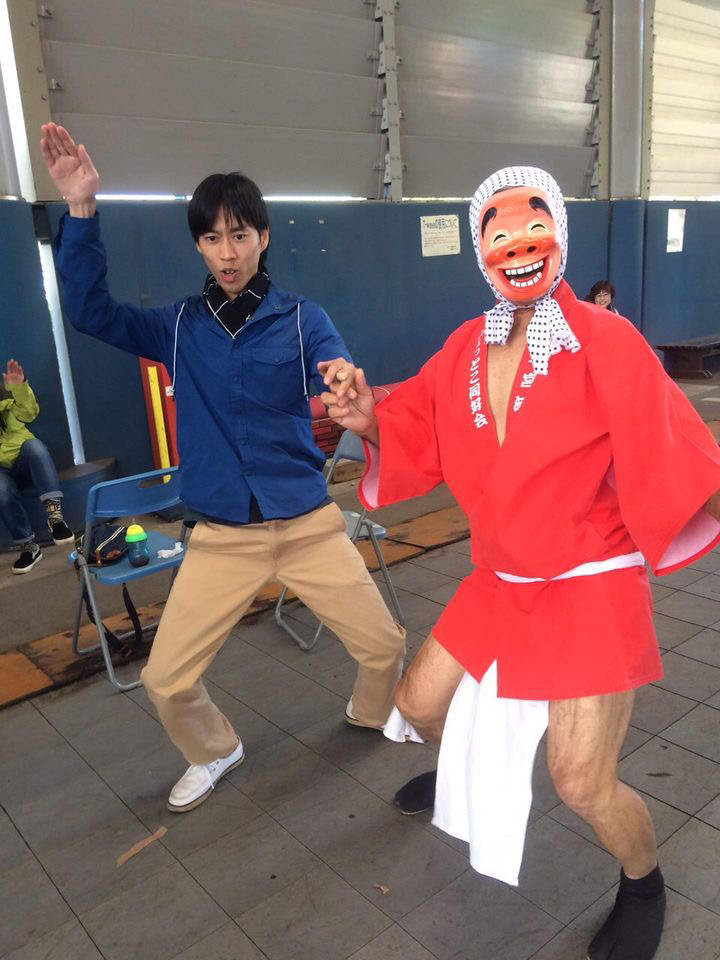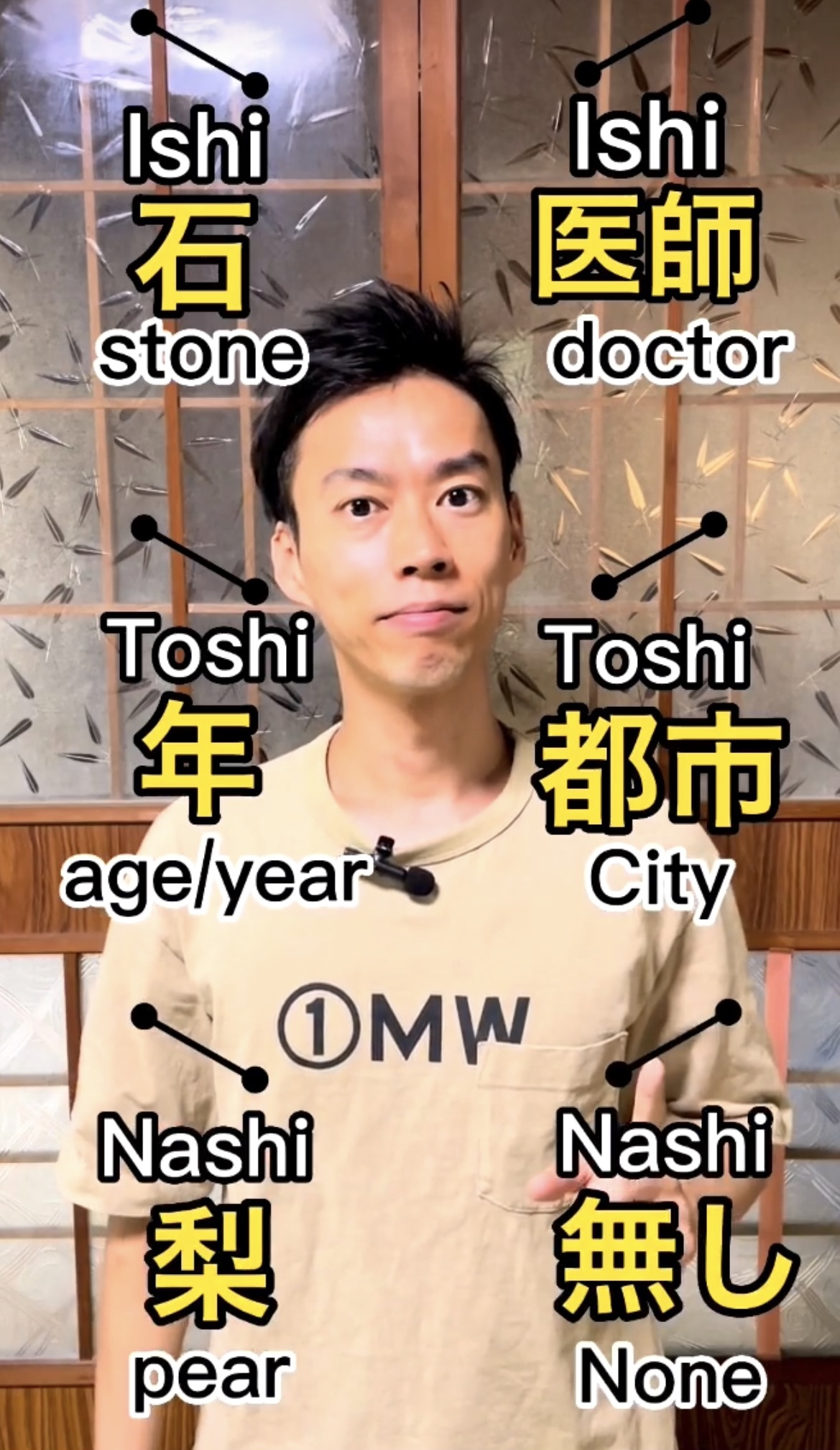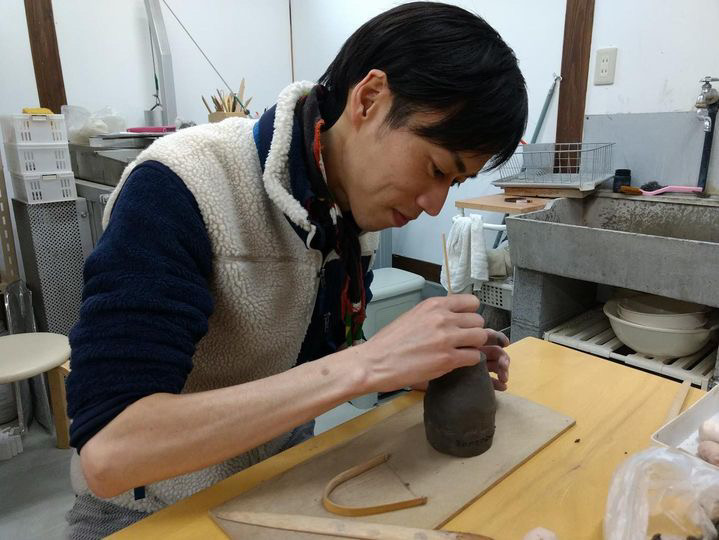This article originally appeared in the October 2023 issue of Connect.
Yuya Himeshima interviewed by Kalista Pattison (Oita)
In February 2022, Yuya Himeshima started posting Japanese language content on his Instagram (nihon__go__go). Around September last year, his profile blew up overnight. Now that he’s approaching the one-year mark of his internet fame, I decided to meet up with him to ask all about it. In this interview we’ll get a deeper understanding of what it takes to be a language teacher and content creator, and how Yuya goes about bringing his audience new and engaging content.
Tell us a bit about yourself, where are you from, what led you to now?
I’m from Japan of course, I was born and raised in Oita. Then, I graduated from highschool and moved to Fukuoka to learn about technology and computers for two years. After graduating from that program, I got a job at a TV station in Hiroshima. I worked there for 10 years, and when I was 30 years old, I decided to come back to Oita. When I was young, I didn’t like Oita and wanted to move to a big city like Tokyo or Osaka, but I realized how good Oita is with its hot springs and nature. Here, I worked at another TV station but the work environment was bad, the hours were long, and one day I collapsed at work. After that, my health condition was too bad to work, so I changed my environment by moving to where I live now in Oita. I couldn’t drive or work at the time, but I realized I could speak Japanese. I wanted to use that to help other people, so I chose to start teaching Japanese online in 2020 to Vietnamese students who wanted to come to Japan for work.
When and why did you start your Instagram?
At first, I didn’t get many students in my online classes; so in 2022 I started making videos on Instagram. I saw other content creators who made effective and fun content. I thought that I could do that too. I don’t know why but I thought I could make more effective and funnier content. So, I started in February 2022 and in September I reached 10,000 followers when a video of mine went viral. It was a video about pitch accent and Japanese homophones. There are many homophones in Japanese and many learners have a hard time distinguishing them. That video got 500,000 viewers.

How do you come up with content for your page, what does your process look like?
For example, counting numbers in Japanese is difficult, and when I teach to my online students, some of them don’t know these simple things, so I make content that reflects what my students struggle with. I also like to watch comedy videos on Instagram. They aren’t related to language learning, but I take inspiration from them to make my own videos interesting. I also have some struggles with English and there’s a possibility that Japanese learners have those same struggles, so I make content inspired by that.
Has your content making process changed from when you first started?
Yes, of course, I think I grew a lot as a creator. I skilled up my editing and how I come up with ideas. I was actually embarrassed to look back on my earlier videos.
What do you think makes your page stand out?
My account doesn’t actually get many followers compared to other creators, but my philosophy is: I want to make funny content. I see other creators who make serious content but I don’t want to do that. I think Instagram isn’t for serious learning, so I want my posts to reflect what people who open Instagram want to see. I also don’t like teaching grammar, my online lessons are for practicing what my students study on their own and I think my Instagram content reflects how I want my online classes to be.
What are some things you’ve learned since you started teaching online and making content on Instagram?
My students are very impressive and many of them have successful and interesting careers, so not only do I teach them Japanese but I actually learn many things from them through our conversations. Like about their job and their country. I think I’ve always been good at connecting with other Japanese people, but I’ve become even better at communicating with foreigners after I started teaching Japanese.
Do you have any advice for people who want to start learning Japanese?
I think it depends on their goals. Some people don’t like studying grammar, but I think everyone should learn basic grammar first, no matter their goal. After that, people can branch off into studying for a test or studying to have daily conversations. I also think kanji writing practice isn’t needed at all, reading is important if you live in Japan but writing is not, so don’t waste your time. I recommend using AI as well. I think ChatGPT is very useful for learners who want to understand nuances in Japanese.

What are your next steps?
I have a small business idea. Now the number of tourists to Japan is increasing, so I want to create a “Trip to Japan” course where tourists can just learn phrases they would use at places like convenience stores and restaurants, as well as about the culture and etiquette, like what to do at shrines. A long term goal would probably be volunteering to teach children, if I were rich. I also want to create a new Instagram that showcases fermented food, since Japanese cuisine uses so many fermented foods like natto, soy sauce, and mirin. Finally, I just want to encourage more people to explore places outside of Tokyo, Osaka, and Kyoto.
Yuya Himeshima is a lover of Oita Prefecture, onsens, and cats. His hobby is going to hot springs but especially looking for hidden and wild hot springs. He also enjoys playing an African drum called djembe.
Kalista Pattison is a second-year JET in Oita Prefecture. She is currently studying for the JLPT like her life depends on it and can be found in an onsen or hunched over a pottery wheel in her free time.




